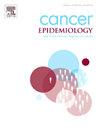民族和种族是膀胱癌诊断时患者性别与分期之间关系的修饰因子。
IF 2.4
3区 医学
Q3 ONCOLOGY
引用次数: 0
摘要
背景:2024年预计将有超过80,000例新诊断,膀胱癌仍然是一个重大的公共卫生问题。由于缺乏常规筛查方案,确定高危人群对于早期发现和干预至关重要。本研究旨在探讨种族和民族是否会改变成人原发性膀胱癌的性别和诊断阶段之间的关系。方法:利用NCI监测、流行病学和最终结果数据库,对235,586例患者进行分析性横断面研究。纳入标准包括2000年至2019年诊断为原发性膀胱恶性肿瘤的18岁及以上患者。暴露变量是性别,主要结局是诊断阶段。采用未调整和调整后的多项logistic回归分析计算相对风险比(RRR)和95% %置信区间(CI)。此外,通过纳入暴露变量与种族和民族之间的相互作用项,探讨了效应修正。结果:我们的数据显示,种族和种族是原发性膀胱癌诊断时性别和分期相关性的影响因素。在非西班牙裔(NH)白人、西班牙裔和NH-黑人女性中,远处分期与原位分期的RRR增加了75% % (RRR 1.75;95 % ci 1.65-1.86), 86 % (rrr 1.86;95 % CI 1.56-2.22), 96 % (RRR 1.96;95 % CI 1.64-2.33)。西班牙裔和nh -黑人妇女的地区分期与原位分期的RRR增加了60% % (RRR 1.60;95 % CI 1.38-1.87)和78 % (RRR 1.78;95 % CI 1.53-2.07)。结论:这些发现强调了定制预防、筛查和治疗策略的重要性,以解决高危人群之间的差异。未来的研究可能会探讨吸烟等危险因素对种族和民族与膀胱癌诊断阶段之间关系的影响。本文章由计算机程序翻译,如有差异,请以英文原文为准。
Ethnicity and race as modifiers of the association between patient sex and stage at diagnosis of bladder cancer
Background
With over 80,000 projected new diagnoses in 2024, bladder cancer remains a significant public health concern. Given the absence of routine screening protocols, identifying high-risk populations becomes crucial for early detection and intervention. This study aimed to investigate whether race and ethnicity modify the association between sex and stage at diagnosis in adults with primary bladder cancer.
Methods
An analytical cross-sectional study of 235,586 patients was completed using the NCI Surveillance, Epidemiology, and End Results database. Inclusion criteria consisted of patients 18 years and older diagnosed with a primary bladder malignancy from 2000 to 2019. The exposure variable was sex, and the primary outcome was the stage at diagnosis. An unadjusted and adjusted multinomial logistic regression analysis was performed to calculate the relative risk ratios (RRR) and 95 % confidence intervals (CI). Additionally, effect modification was explored by including the interaction term between the exposure variable and race and ethnicity.
Results
Our data revealed that ethnicity and race were effect modifiers of the association between sex and stage at diagnosis of primary bladder cancer. Among non-Hispanic (NH) White, Hispanic, and NH-Black women, the RRR of Distant vs. In-Situ staging increased by 75 % (RRR 1.75; 95 % CI 1.65–1.86), 86 % (RRR 1.86; 95 % CI 1.56–2.22), and 96 % (RRR 1.96; 95 % CI 1.64–2.33) respectively. The RRR for Regional vs In-Situ staging in Hispanic and NH-Black women increased by 60 % (RRR 1.60; 95 % CI 1.38–1.87) and 78 % (RRR 1.78; 95 % CI 1.53–2.07) respectively.
Conclusion
These findings emphasize the importance of tailoring prevention, screening, and treatment strategies to address disparities among high-risk groups. Future studies may investigate the influence of risk factors such as smoking status on this association between race and ethnicity and stage at diagnosis of bladder cancer.
求助全文
通过发布文献求助,成功后即可免费获取论文全文。
去求助
来源期刊

Cancer Epidemiology
医学-肿瘤学
CiteScore
4.50
自引率
3.80%
发文量
200
审稿时长
39 days
期刊介绍:
Cancer Epidemiology is dedicated to increasing understanding about cancer causes, prevention and control. The scope of the journal embraces all aspects of cancer epidemiology including:
• Descriptive epidemiology
• Studies of risk factors for disease initiation, development and prognosis
• Screening and early detection
• Prevention and control
• Methodological issues
The journal publishes original research articles (full length and short reports), systematic reviews and meta-analyses, editorials, commentaries and letters to the editor commenting on previously published research.
 求助内容:
求助内容: 应助结果提醒方式:
应助结果提醒方式:


